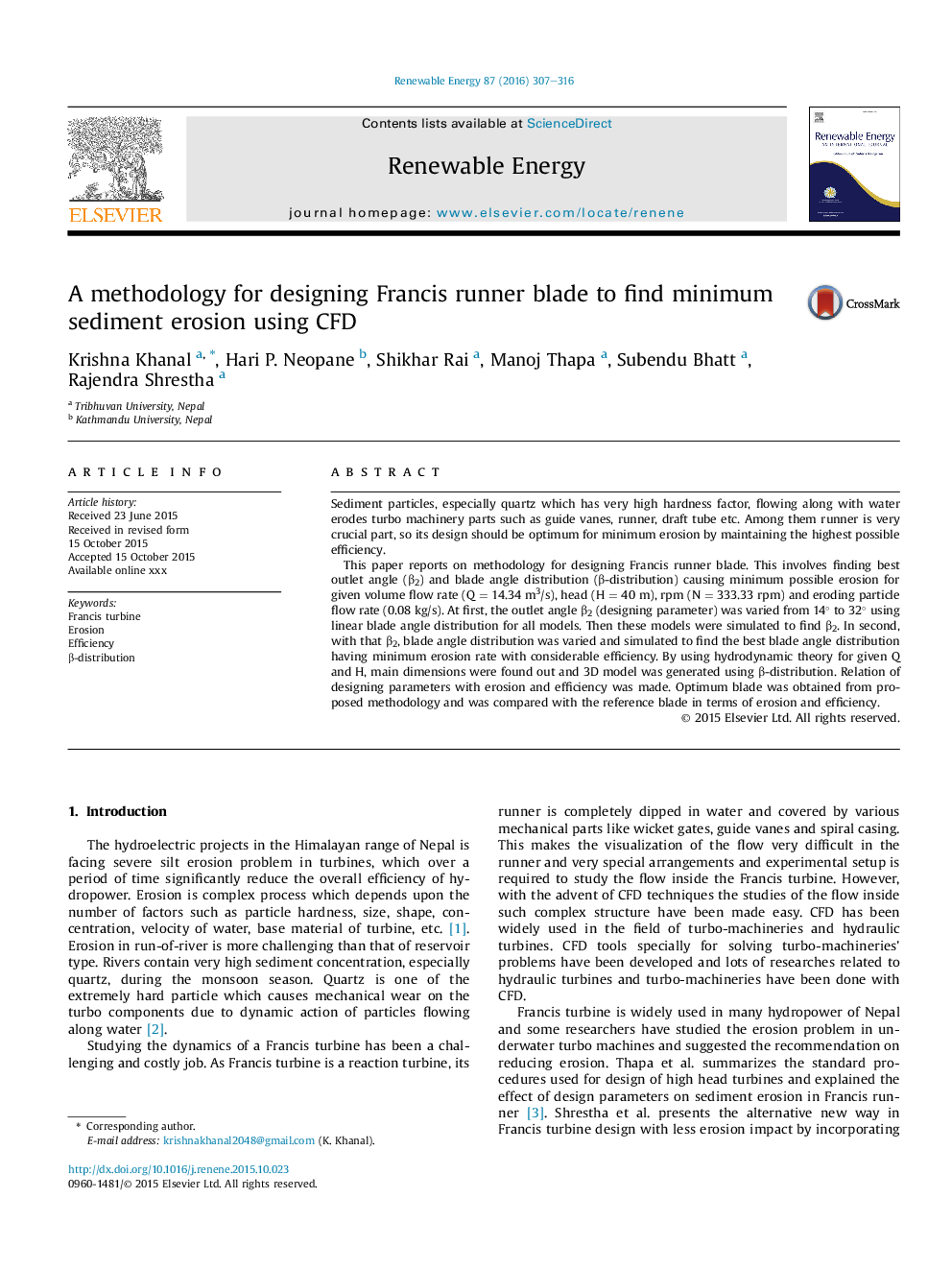| Article ID | Journal | Published Year | Pages | File Type |
|---|---|---|---|---|
| 10293972 | Renewable Energy | 2016 | 10 Pages |
Abstract
This paper reports on methodology for designing Francis runner blade. This involves finding best outlet angle (β2) and blade angle distribution (β-distribution) causing minimum possible erosion for given volume flow rate (Q = 14.34 m3/s), head (H = 40 m), rpm (N = 333.33 rpm) and eroding particle flow rate (0.08 kg/s). At first, the outlet angle β2 (designing parameter) was varied from 14° to 32° using linear blade angle distribution for all models. Then these models were simulated to find β2. In second, with that β2, blade angle distribution was varied and simulated to find the best blade angle distribution having minimum erosion rate with considerable efficiency. By using hydrodynamic theory for given Q and H, main dimensions were found out and 3D model was generated using β-distribution. Relation of designing parameters with erosion and efficiency was made. Optimum blade was obtained from proposed methodology and was compared with the reference blade in terms of erosion and efficiency.
Keywords
Related Topics
Physical Sciences and Engineering
Energy
Renewable Energy, Sustainability and the Environment
Authors
Krishna Khanal, Hari P. Neopane, Shikhar Rai, Manoj Thapa, Subendu Bhatt, Rajendra Shrestha,
